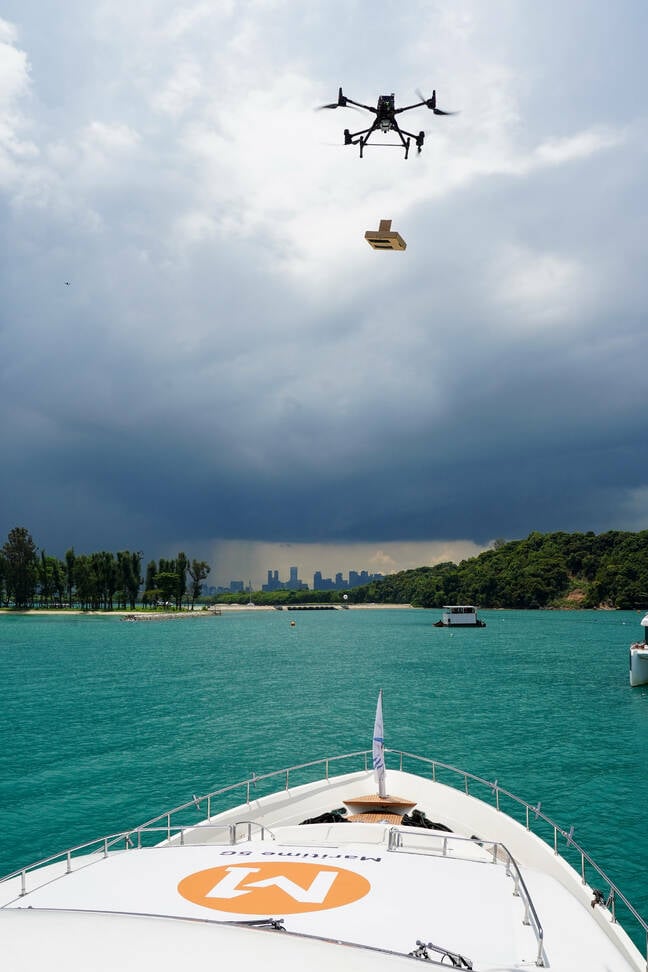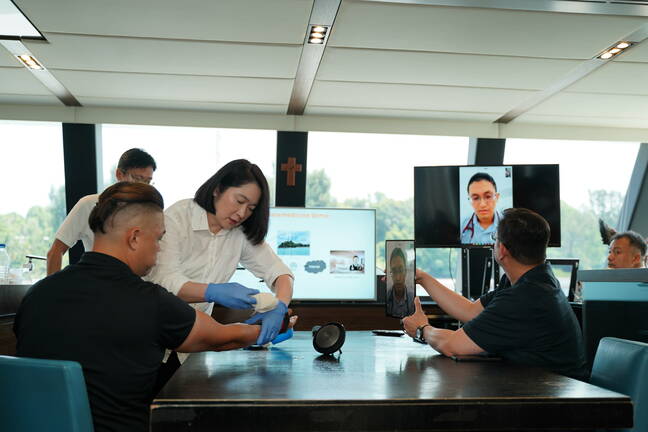5G On The High Seas Brings The Internet Of Things To Singapore's Port
For years The Reg has heard how 5G's many features will profoundly change every industry under the sun. Yesterday we saw an example of that claim that holds water: a plan bringing comprehensive 5G coverage to Singapore's maritime industry.
The island nation is one of the world's major ports and is home to over 5,000 maritime companies, while more than 4,400 vessels sail the seas under the Singaporean flag.
And because you're reading this in 2023, all aboard those craft appreciate good connectivity.
However, the space that extends southward from mainland Singapore to its port limits has spotty wireless coverage, despite housing small islands serving tourists, research centers, a remote island that houses a landfill, chemical plants, and fish farms. Then there's the underwater gas and oil pipelines that require occasional inspection or maintenance.
In the past, the government has experimented with different ways to bring connectivity comparable to 5G to the area, including the use of television white space for data transmission over long distances.
Singapore telco M1 said on Wednesday it aims to bring 5G to all the city's port limits by 2025, with much of the relevant area already covered by mid-2023.
- At 9 for every 100 workers, robots are rife in Singapore – so we decided to visit them
- Building your own private 5G is as easy as Wi-Fi
- Phở no! Vietnam's last working submarine cable glitches out
- Ransomware severs 1,000 ships from on-shore servers
M1 has built roughly a dozen towers across the islands that dot the area. Devices communicate with base centers, which in turn transmit data back to the mainland over line of sight microwave, an M1 representative explained to The Register at a press event on Tuesday.
"Back on land we have a cloud native 5G core network, which allows us to do network function exposure to our partners. We could actually transfer the data directly to the data centers, or some hybrid data centers," he said, adding that some of those partners may have in-house analytics capabilities. M1 currently partners with Nokia to deploy the cloud-native core software.
"So it's a very end-to-end ecosystem," explained the M1 representative. "It is possible in 5G because of factors like network slicing, which we have a secure slice of the network solely for us."
One of the extended network's benefits is that tourists visiting outlying islands to enjoy their beaches or fishing won't accidentally roam onto networks in neighboring Indonesia. International roaming produces bills that ruin a nice day out.
For the maritime industry, 5G means the chance to put the Internet of Things to work.
M1 said it would have packaged 5G solutions for autonomous robots inspecting critical assets sometime in Q3 this year, which would reduce the need to fly inspectors out to make such assessments in person. But for now, the use cases on the mind of M1 and IMDA center on assisting shipboard life by offering video surveillance and telemedicine.
M1 has partnered with a local health company, Fullerton Health Clinic, to offer telemedicine services that see a Samsung tablet used to make live calls placed to a mainland doctor from a ship. During a demo seen by The Reg the call did drop – but M1 said should that happen, there is a resumption protocol. If that fails there is a call center, which The Register is sure is an absolute joy to navigate.
Should medicine be required, a drone can deliver the goods a mere two or three hours after a consultation. M1 demonstrated a drone delivering supplies to an almost 11 square meter space aboard a yacht.
M1 CEO Manjot Singh Mann called telemedicine the "first forerunner" of maritime 5G. The CEO said he takes a type of 'build it they will come' philosophy.
Onboard real-time surveillance packages start at $3700 per vessel, for a package that includes a 5G router, a network video recorder and two high-definition video cameras. The cameras uplink via 5G to a tower which downlinks back to an onboard screen on the ship while utilizing online SaaS surveillance software. A dedicated internet link from the software sends it to a third screen monitored offsite – presumably on the mainland.
"When 3G turned to 4G, nobody thought it would do anything really great, but 4G LTE enabled mobile first," Mann said, adding that we're yet to know all the maritime use cases that 5G will bring. ®
The Penny Drops: Understanding The Complex World Of Small Stock Machinations
Micro-cap stocks, often overlooked by mainstream investors, have recently garnered significant attention due to rising c... Read more
Current Economic Indicators And Consumer Behavior
Consumer spending is a crucial driver of economic growth, accounting for a significant portion of the US GDP. Recently, ... Read more
Skepticism Surrounds Trump's Dollar Devaluation Proposal
Investors and analysts remain skeptical of former President Trump's dollar devaluation plan, citing tax cuts and tariffs... Read more
Financial Markets In Flux After Biden's Exit From Presidential Race
Re-evaluation of ‘Trump trades’ leads to market volatility and strategic shifts.The unexpected withdrawal of Joe Bid... Read more
British Pound Poised For Continued Gains As Wall Street Banks Increase Bets
The British pound is poised for continued gains, with Wall Street banks increasing their bets on sterling's strength. Th... Read more
China's PBoC Cuts Short-Term Rates To Stimulate Economy
In a move to support economic growth, the People's Bank of China (PBoC) has cut its main short-term policy rate for the ... Read more



